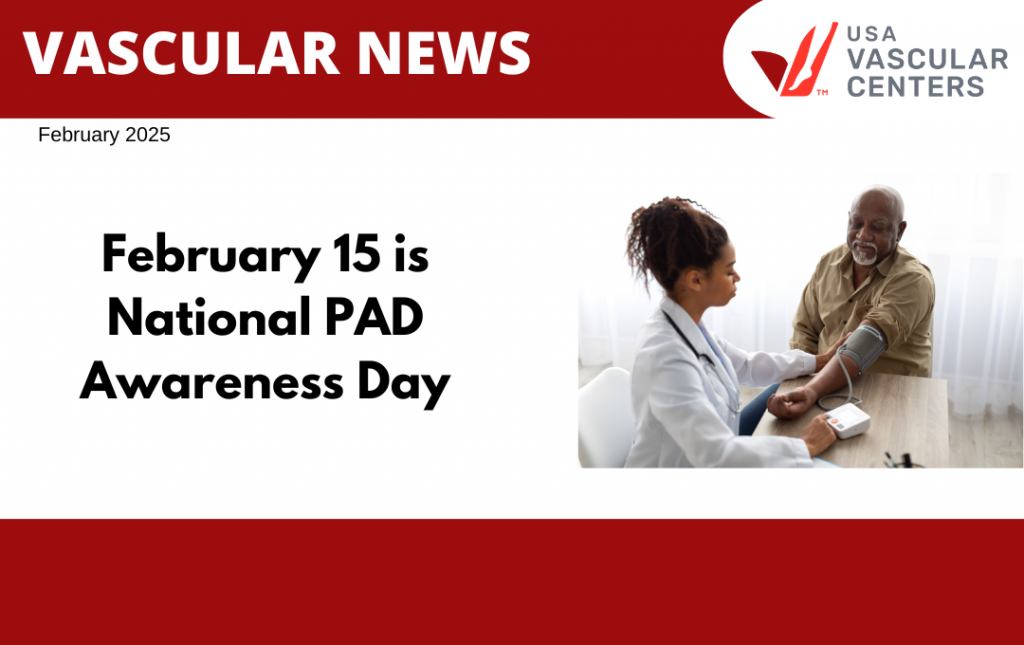The third Saturday of February marks National PAD Awareness Day, a time to learn about the signs of peripheral artery disease (PAD) and tips on managing or preventing the condition.
PAD affects eight to twelve million adults in the U.S. While some PAD patients experience common symptoms such as leg pain or cramping during physical activity, others don’t experience symptoms at all. This can be dangerous for asymptomatic patients because they may not know they have the disease until they have a heart attack, stroke, or need an amputation due to a lack of blood flow.
PAD is a condition that mainly affects the legs. The arteries, which are responsible for carrying blood from the heart to the rest of the body, become clogged with plaque. Plaque is the accumulation of fatty substances that stick to the walls of arteries, leading to a condition known as atherosclerosis. As the accumulation continues, less blood is able to circulate through the body. This contributes to leg pain, but can also cause symptoms such as:
- Leg discoloration
- Weakness in the legs
- Hair loss in the legs
- Shiny legs
- Poor toenail growth
- Difficulty moving around
For those living with PAD, managing the disease is the best way to reduce the risks of heart attack, stroke, and amputation. This can include adopting a healthier lifestyle, taking medications for blood pressure and cholesterol, and minimally invasive treatments. These treatments involve interventional radiology techniques to find blockages in the arteries and clear them.
USA Vascular Centers offer these treatments that are proven to open the arteries and improve blood flow to the rest of the body. They also offer ongoing care to ensure that patients stay on track to maintaining healthy arteries.
The Society for Cardiovascular Angiography and Interventions (SCAI), in collaboration with the Association of Black Cardiologists, the Society for Interventional Radiology, and the Society for Vascular Surgery, created the PAD Pulse Alliance. They aim to raise awareness of PAD with an interactive toolkit that educates the public about the condition as well as resources to find physicians who treat PAD. Information about the PAD Pulse Alliance can be found here.
USA Vascular Centers operates in 37 locations in the U.S. and have appointments readily available. Those with questions about PAD and its treatments can call 888.773.2193 or schedule an appointment online.

